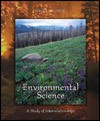 |
1 |  | 
Per capita production of solid waste in the United States equals about two kilograms per day. |
|  | A) | True |
|  | B) | False |
 |
 |
2 |  | 
As compared to 1960, net solid waste generation has |
|  | A) | increased even with recycling programs in place. |
|  | B) | decreased because recycling programs are now in place. |
|  | C) | stayed the same despite rising populations. |
 |
 |
3 |  | 
Which material accounts for the greatest percentage of the weight of solid waste? |
|  | A) | food waste |
|  | B) | plastic |
|  | C) | paper |
|  | D) | yard waste |
|  | E) | wood |
 |
 |
4 |  | 
Essentially five techniques-incineration, landfills, source reduction, composting, and recycling-are used to dispose of solid waste. |
|  | A) | True |
|  | B) | False |
 |
 |
5 |  | 
Typical modern municipal landfills contain which of the following? |
|  | A) | monitoring wells |
|  | B) | impermeable barriers |
|  | C) | methane retrieval systems |
|  | D) | leachate treatment facilities |
|  | E) | all of the above |
 |
 |
6 |  | 
Currently about 25% of all the solid waste generated in the United States is put in landfills while the rest is either incinerated or recycled. |
|  | A) | True |
|  | B) | False |
 |
 |
7 |  | 
By the mid 1990s, the number of landfills in the United States was less than half of what it was in 1988. |
|  | A) | True |
|  | B) | False |
 |
 |
8 |  | 
A European concept that uses solid waste to generate electricity is called |
|  | A) | mass burn. |
|  | B) | catalytic incineration. |
|  | C) | energy retrieval. |
|  | D) | precycling. |
|  | E) | none of the above. |
 |
 |
9 |  | 
Municipal solid waste methods that are used by the developed countries around the world do not differ much; there is a remarkable similarity in the mixture of landfills, incineration, and recycling in all of the countries. |
|  | A) | True |
|  | B) | False |
 |
 |
10 |  | 
Which is not true about incineration of solid waste? |
|  | A) | there are drastic reductions in the volume and weight of wastes |
|  | B) | the ash can contain heavy metals and other toxic substances |
|  | C) | the incinerators are relatively cheap to build |
|  | D) | the incinerators can be built to generate electricity |
|  | E) | all of the above are true |
 |
 |
11 |  | 
Because incineration is such an attractive way to reduce the volume of solid waste and to generate electricity, the Environmental Protection Agency has been very active in issuing permits for new incinerator construction. |
|  | A) | True |
|  | B) | False |
 |
 |
12 |  | 
Which of the following is not a method of source reduction? |
|  | A) | making packages that weigh less |
|  | B) | recycling |
|  | C) | municipal composting |
|  | D) | incineration |
|  | E) | all of the above are examples of source reduction |
 |
 |
13 |  | 
Currently, the United States recycles what percentage of the municipal solid waste it generates? |
|  | A) | about 1% |
|  | B) | close to 25% |
|  | C) | about 50% |
|  | D) | about 75% |
|  | E) | nearly 100% |
 |
 |
14 |  | 
One Sunday edition of the New York Times consumes about 62,000 trees to produce the paper for that one day. |
|  | A) | True |
|  | B) | False |
 |
 |
15 |  | 
Crushed glass reduces the energy required to manufacture new glass by about 10%. |
|  | A) | True |
|  | B) | False |
 |



 2002 McGraw-Hill Higher Education
2002 McGraw-Hill Higher Education